Last week, I visited a photo site on Two Jack Lake, just north of the Town of Banff. I was accompanied by Bob Bear and our mission for the day was to photograph Cascade Mountain at sunrise. We arrived onsite at 6:30 am and were able to capture scenes of the evolving colour, as the sun rose behind us.
My first shot is a conventional panorama, consisting of four photographs stitched together, captured using a multi-row panorama head. This head sits atop the tripod and is designed to eliminate parallax distortion ( https://www.yourdictionary.com/parallax) when rotating the camera across the scene. A sequence of overlapping images can be taken by rotating the lens around around its nodal point, accomplished using the nodal slider on the panorama head. The images can then be stitched together without distortion.
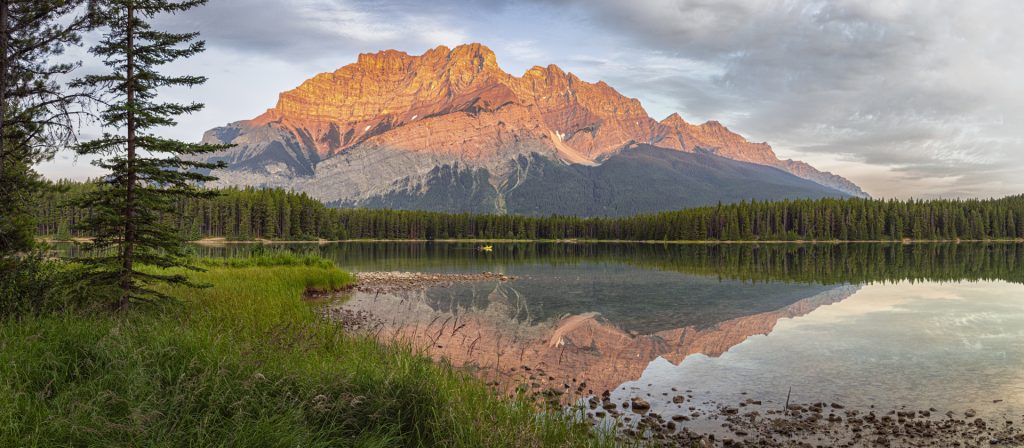
Another way go shoot a panorama is using a tilt-shift lens. A tilt-shift lens is a lens in which the optics can be tilted and/or shifted in relation to the image sensor. The shift feature of a tilt-shift lens, as the name implies, allows the lens’ optics to shift laterally or vertically in relation to the image sensor. A sequence of images can be taken (3 in this case) by shifting the lens laterally and and taking overlapping images, which can be stitched together with photographic software. Again, no parallax distortion.
This photograph was taken later in the morning using a tilt-shift lens.
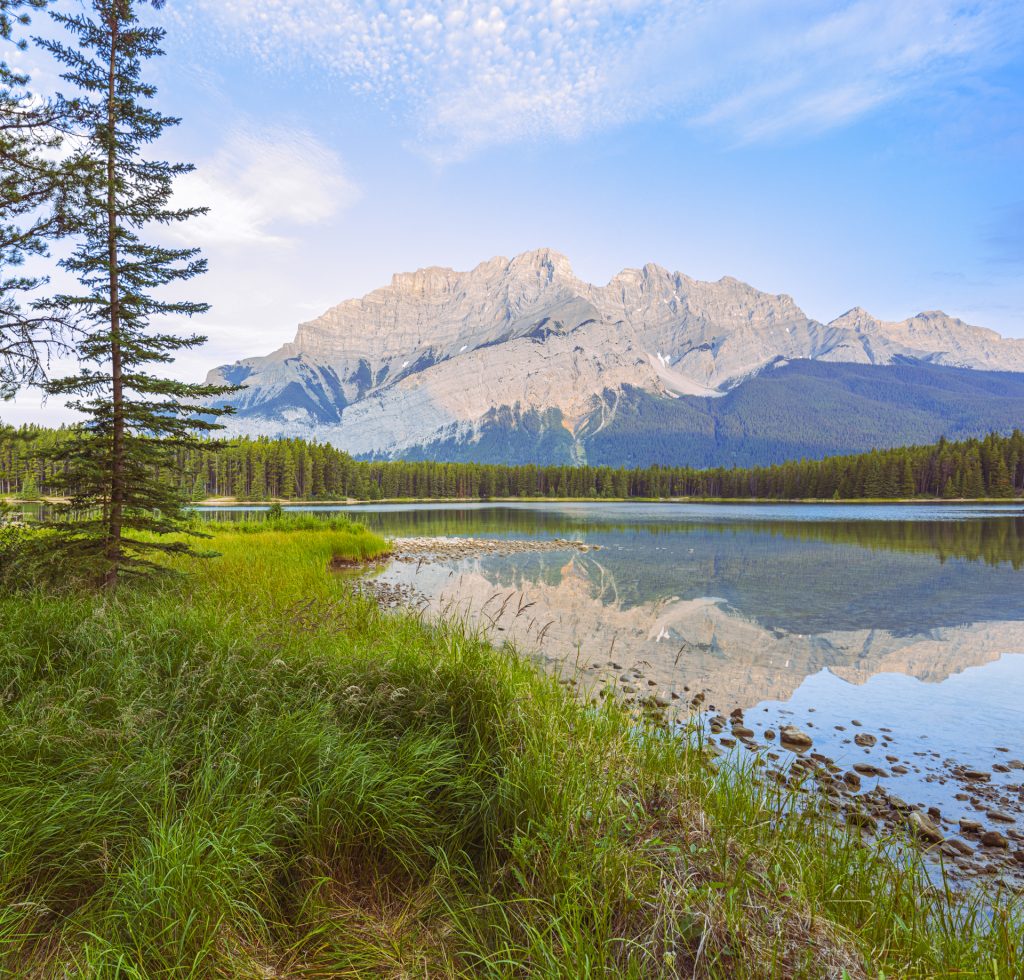
*I enjoy taking panoramic photographs with images created using these techniques. I acknowledge that the extra effort involved is not really essential, due to advances in photographic software that eliminate distortion in the stitching process.
The rest of today’s photographs were taken as single images, beginning with this picture of the mountain’s reflection in the lake. A frequent advantage of taking pictures early in the morning is the absence of wind and the presence of still water.
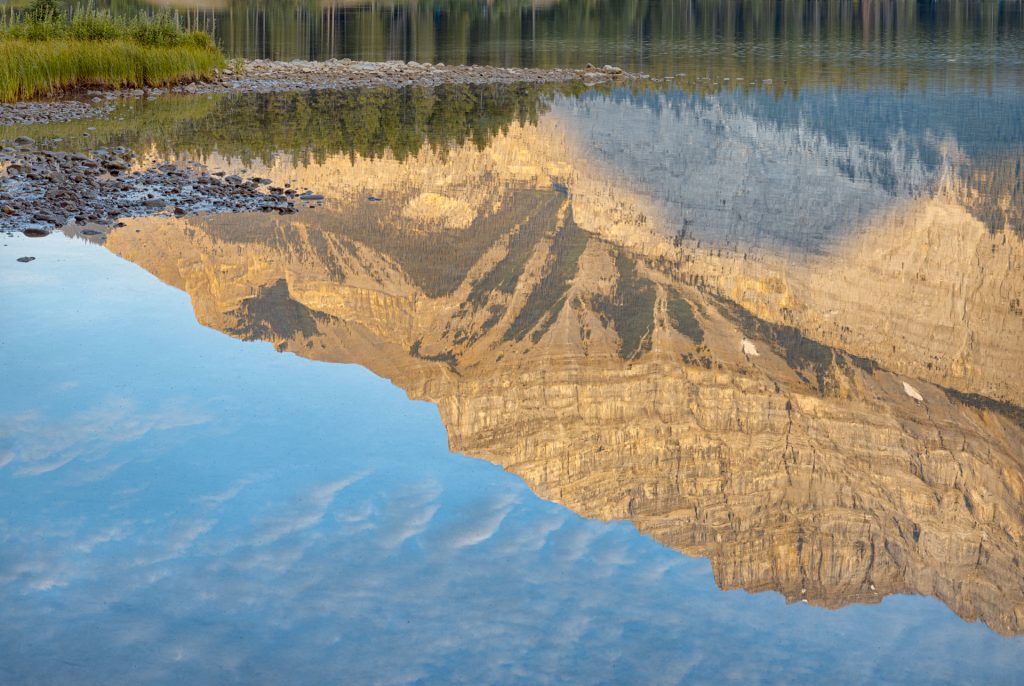
My final images for today are different versions of the same scene, beginning with the colour interpretation. The highlight of this picture for me is the unique cloud pattern, one of a few that passed through while we were onsite.
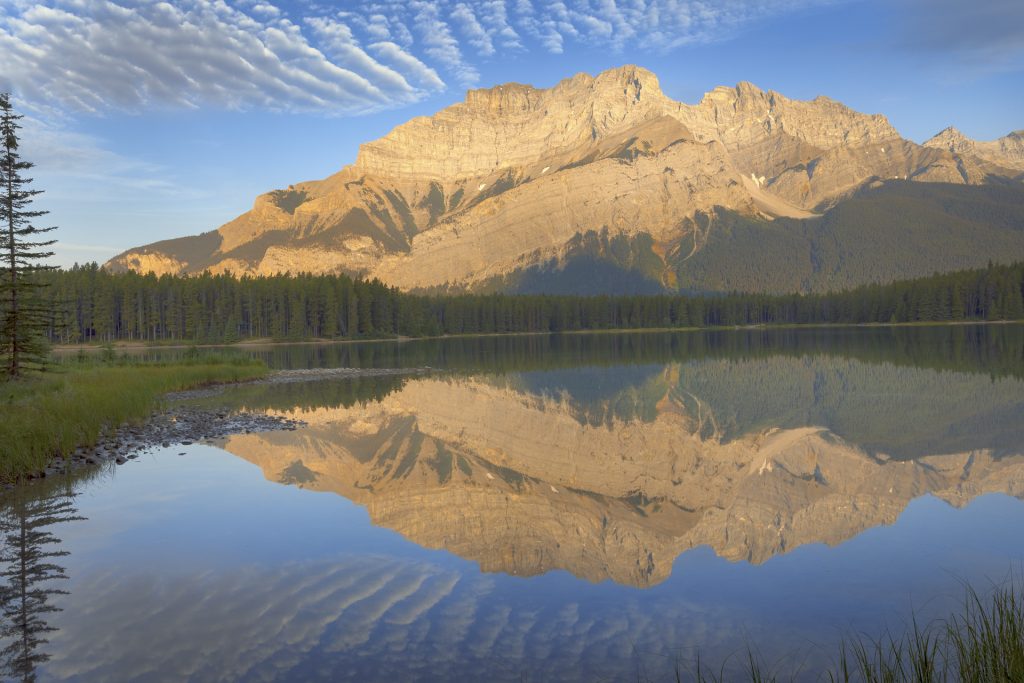
I was curious to see how this same photo would look in black and white. It’s not bad. I like the stronger contrast, compared to the colour version, but a sunrise scene without colour? My preference is the coloured one.
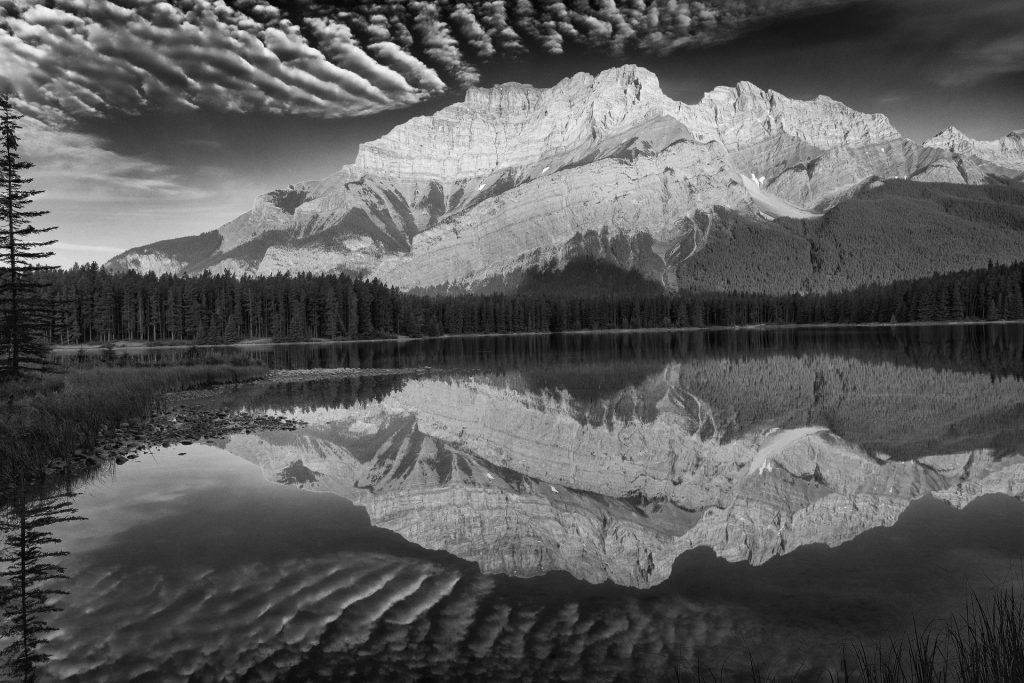
Because we visited only this single site and because the early morning light lasts only so long, we wrapped up after an hour of shooting and were back home by ~9:30 am. A great outing.
